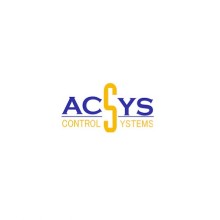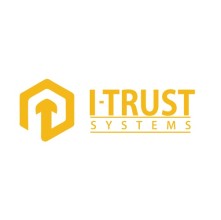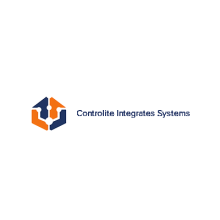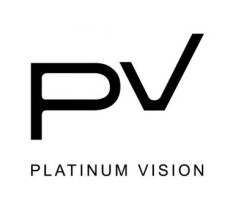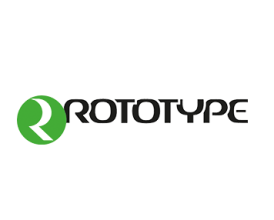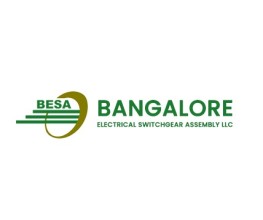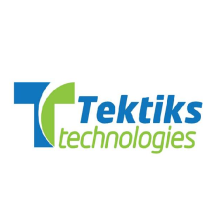Find By Category
-
Automation companies (105)
-
Marketing Agencies (590)
-
Tailor Stores (463)
-
Courier Services (294)
-
Pest control service (224)
-
Engineering Consultants (221)
-
Freight Forwarding Agencies (214)
-
Carpenters (199)
-
Medical Equipment Suppliers (187)
-
HVAC Contractors (171)
-
Oil Field Equipment Suppliers (164)
-
Recruitment Agencies (149)
-
Security System Suppliers (148)
-
Computer Repair Services (128)
-
Human Resource Consultants (127)
-
Equipment Rental Agencies (92)
-
Audio Visual Services (88)
-
Lighting Consultants (88)
-
Swimming Pool Constructions (85)
-
Plastic Products Suppliers (79)
-
Boutiques (77)
-
Fastener Suppliers (77)
-
Flooring Stores (74)
-
Electrical Wholesalers (70)
-
Plumbers (69)
-
Holding Companies (66)
-
Steel Distributors (64)
-
Fire Protection Equipment Suppliers (60)
-
Certification Agencies (59)
-
Promotional Products Suppliers (56)
-
Electrical Fitting (55)
-
Welding Services (50)
-
Entertainment Agencies (49)
-
Fire Protection Consultants (46)
-
Handyman (45)
-
Health Consultants (44)
-
Foreign consulates (37)
-
Talent Agencies (37)
-
Food & Beverage Consultants (35)
-
Bearing Suppliers (33)
-
Vending Machine Suppliers (32)
-
Financial Advisory Consultants (32)
-
Flooring Contractors (32)
-
IT Consultants (27)
-
Lumber (26)
-
Environmental Consultants (25)
-
Locksmiths (25)
-
Cable Companies (23)
-
Playground Equipment Suppliers (17)
-
Turf Suppliers (14)
-
Electrical Equipment Suppliers (11)
-
Swimming Pool Repair Services (9)
-
Customs Brokers (9)
-
Driver & Vehicle Licensing Agencies (9)
-
Dental Supply Stores (7)
-
Water Sports Equipment Rental Services (6)
-
Custom Label Printer Companies (5)
-
Cleaning Products Suppliers (2)
Most Popular Automation companies Near Me in Dubai
- 4.2
 E311 - Industrial Area 13 - Industrial Area - Sharjah - United Arab Emirates
E311 - Industrial Area 13 - Industrial Area - Sharjah - United Arab Emirates +971 50 368 943
+971 50 368 943 Sharjah
Sharjah
- 4.1
 Al Zarooni Building 309 Shop no 13 - E311 - Industrial Area 13 - Sharjah - United Arab Emirates
Al Zarooni Building 309 Shop no 13 - E311 - Industrial Area 13 - Sharjah - United Arab Emirates +971509568201
+971509568201 Sharjah
Sharjah
- 4.6
 Al Zarooni Building - Shop # 14 E311 - Industrial Area 13 - Industrial Area - Sharjah - United Arab Emirates
Al Zarooni Building - Shop # 14 E311 - Industrial Area 13 - Industrial Area - Sharjah - United Arab Emirates +971525223840
+971525223840 Sharjah
Sharjah
- 4.7
 Office 1202 Park Avenue Building - Dubai - United Arab Emirates
Office 1202 Park Avenue Building - Dubai - United Arab Emirates +97143925228
+97143925228 Dubai
Dubai
- 4.9
 Q3 Area, Warehouse & Office no 16 - Sharjah - United Arab Emirates
Q3 Area, Warehouse & Office no 16 - Sharjah - United Arab Emirates +97165528861
+97165528861 Sharjah
Sharjah
- 4.7
 Fifty-One Tower - Office 506 Marasi Dr - Business Bay - Dubai - United Arab Emirates
Fifty-One Tower - Office 506 Marasi Dr - Business Bay - Dubai - United Arab Emirates +971508434941
+971508434941 Business Bay
Business Bay
- 4.7
 48 Burjgate Tower, Level - 20 Sheikh Zayed Rd - Dubai - United Arab Emirates
48 Burjgate Tower, Level - 20 Sheikh Zayed Rd - Dubai - United Arab Emirates +97142552157
+97142552157 Dubai
Dubai
- 4.7
 Office # 213 Sultan Business Center Street # 4 - Oud Metha Rd - Dubai - United Arab Emirates
Office # 213 Sultan Business Center Street # 4 - Oud Metha Rd - Dubai - United Arab Emirates +97143375100
+97143375100 Oud Metha
Oud Metha
- 4.7
 Industrial Area - Industrial Area 11 - Sharjah - United Arab Emirates
Industrial Area - Industrial Area 11 - Sharjah - United Arab Emirates +97165351415
+97165351415 Sharjah
Sharjah
- 4.8
 13th St - Al Qusais - Al Qusais 1 - Dubai - United Arab Emirates
13th St - Al Qusais - Al Qusais 1 - Dubai - United Arab Emirates +971501223791
+971501223791 Al Qusais
Al Qusais
- 4.7
 Capital Golden Tower - Showroom 505 - Business Bay - Dubai - United Arab Emirates
Capital Golden Tower - Showroom 505 - Business Bay - Dubai - United Arab Emirates +97145913511
+97145913511 Business Bay
Business Bay
- 4.7
 Business Bay - Bay Square - Dubai - United Arab Emirates
Business Bay - Bay Square - Dubai - United Arab Emirates +971556693323
+971556693323 Business Bay
Business Bay
- 4.8
 Jebel Ali Village - Discovery Gardens - Dubai - United Arab Emirates
Jebel Ali Village - Discovery Gardens - Dubai - United Arab Emirates +971559364355
+971559364355 Dubai
Dubai
- 4.9
 Tameem House Office Building - C008-014 - Barsha Heights - Dubai - United Arab Emirates
Tameem House Office Building - C008-014 - Barsha Heights - Dubai - United Arab Emirates +971504734678
+971504734678 Dubai
Dubai
- 4.8
 Office#1005, Saheel Tower - 2 Al Ittihad Rd - Dubai - United Arab Emirates
Office#1005, Saheel Tower - 2 Al Ittihad Rd - Dubai - United Arab Emirates +97145847385
+97145847385 Dubai
Dubai
- 4.7
 X5PF+92M - Al Wasl Rd - Dubai Investments Park - Dubai - United Arab Emirates
X5PF+92M - Al Wasl Rd - Dubai Investments Park - Dubai - United Arab Emirates +971543064029
+971543064029 Dubai
Dubai
- 4.8
 Arena FZE, Dubai Airport Free Zone, Building 5EA, Office G-08 - Dubai - United Arab Emirates
Arena FZE, Dubai Airport Free Zone, Building 5EA, Office G-08 - Dubai - United Arab Emirates +97142991888
+97142991888 Dubai
Dubai
- 4.8
 Sharjah Industrial Area 12, Behind GECO Complex - Sharjah - United Arab Emirates
Sharjah Industrial Area 12, Behind GECO Complex - Sharjah - United Arab Emirates +97165399004
+97165399004 Sharjah
Sharjah
- 4.7
 Ascon House - Salah Al Din St - Muteena - Dubai - United Arab Emirates
Ascon House - Salah Al Din St - Muteena - Dubai - United Arab Emirates +971506546854
+971506546854 Deira
Deira
Load more
Automation Companies in Dubai
Current trends in industrial and home control systems have witnessed the enhancement of automation technologies in recent times. In spite of its slow start in earlier years, automation has evolved considerably to facilitate simple to complex control applications. The prevailing automation systems provide better productivity at a reasonable cost. Keep reading to get a better insight into the types of automation and their usage.
What Do You Mean by Automation?
Automation refers to the process where technology is used in order to perform tasks where minimal human intervention is present. This comprises enterprise applications like IT automation, business process automation (BPA), network automation, industrial automation like robotics, and consumer applications like home automation, and so on. The automation system is operated via automatic actuating devices, sensory systems, and feedback control loops.
What are the Types of Automation Systems?
The automation system has replaced the traditional manual system by automating the process functions by using software and hardware tools, involving very little manpower. Following are the types of automation systems:
-
Industrial Automation
Industrial automation is the approach of streamlining industrial production processes to increase their efficiency. The integration of automation in industries provides excellent manufacturing solutions through better productivity and quality with reduced wastage and time consumption. Industrial automation involves the utilisation of different control devices like PC/PLC’s, sensors, machine drives, communication buses, Human Machine Interface (HMI), and so on. Industrial automation is subdivided into four types. These include:
-
Numerically Controlled Machines
-
Computer – Aided Manufacturing (CAM)
-
Flexible Manufacturing Systems
-
Industrial Robots
-
Home Automation
The rapid advancement of technologies is considerably influencing the daily lives of humans at a fast pace by controlling home appliances. Since electric connections are present in every house, it is necessary to use home automation to ensure safety, efficient resource management, reduced electricity consumption, and human effort. Home automation systems perform operations like regulating HVAC (Heating, Ventilation, and Air Conditioning), lighting control, load management, managing audio/video systems, security and monitoring, and other tasks. Home automation is subdivided into three types. These include:
-
Wired Home Automation System
-
Power Line Home Automation System
-
Wireless Home Automation
In a nutshell, both industrial and home automation are responsible for increasing efficiency and productivity by using various technologies, which in turn reduces human intervention. Overall output, accuracy, productivity, safety, and reduced labour charges are the evidence of automation systems
FAQs Related Automation companies in Dubai
The three major systems used in industrial automation include: Fixed Automation, Flexible Automation, and Programmable Automation.
There are three basic principles of automation:
-
Source of power to conduct action
-
Feedback controls
-
Machine programming
Following are the advantages of an industrial automation system:
-
More time to participate in household activities
-
Perfect security mechanism
-
Fast and easy controls
-
Better environment for social get-togethers
-
Adequate power saving
Mentioned below are the benefits of a home automation system:
-
Cost-effective
-
More accurate data collection
-
Higher productivity
-
Increased flexibility
-
Low maintenance charges










